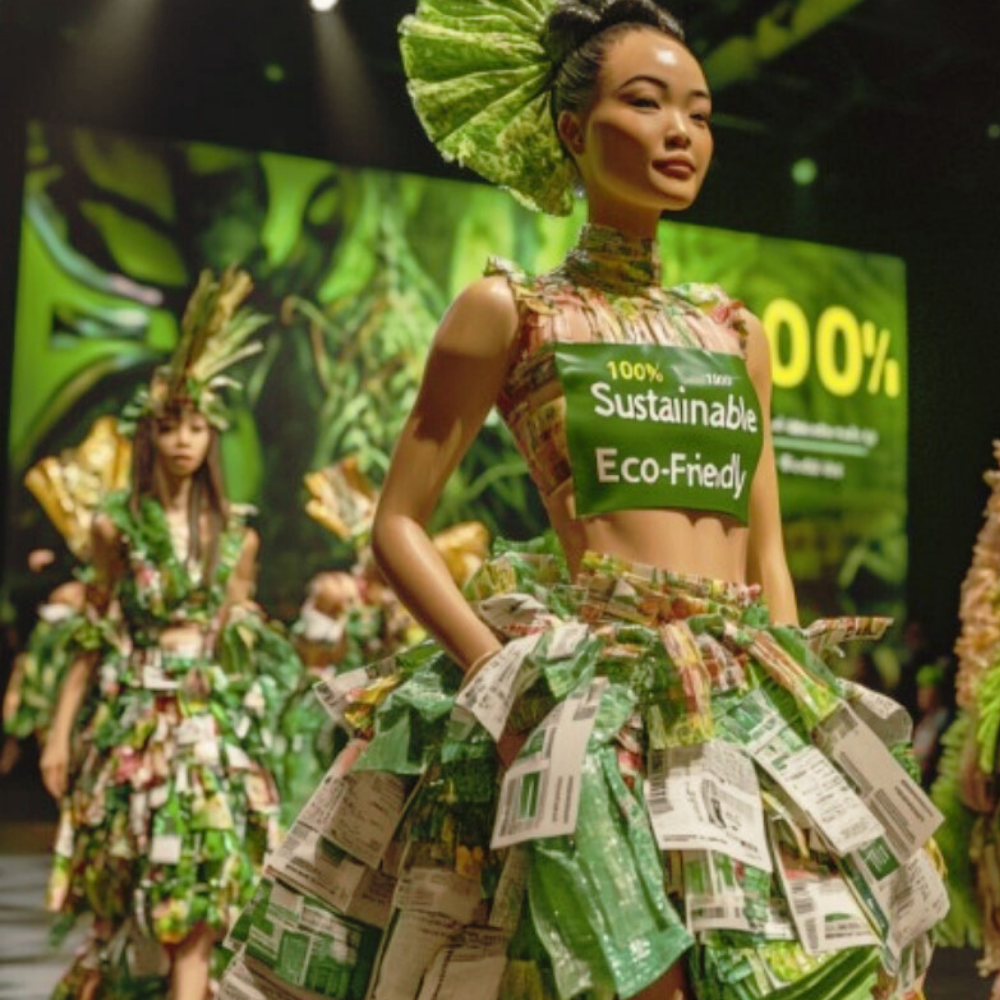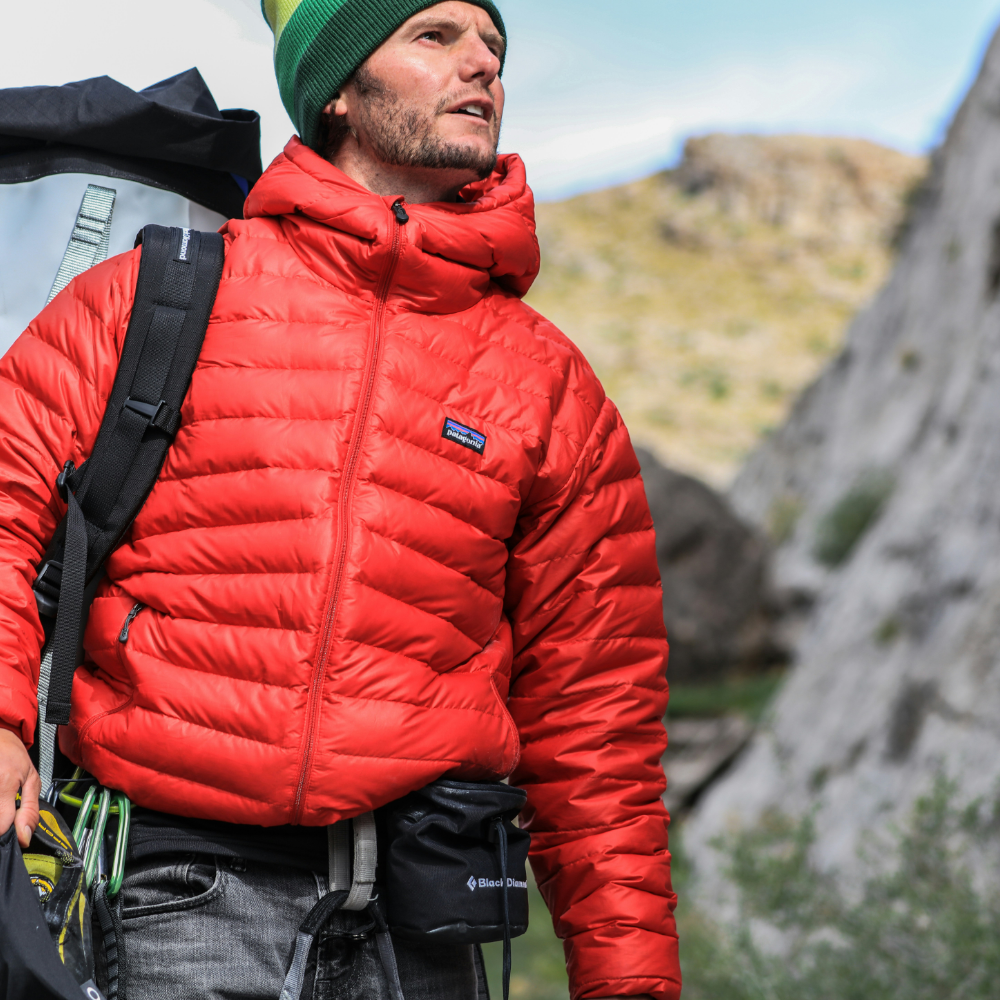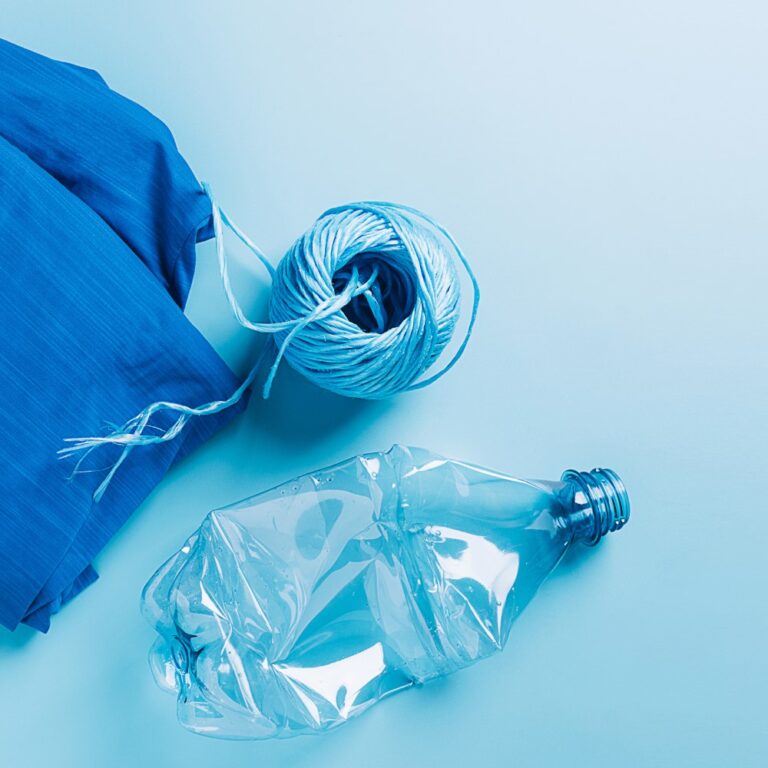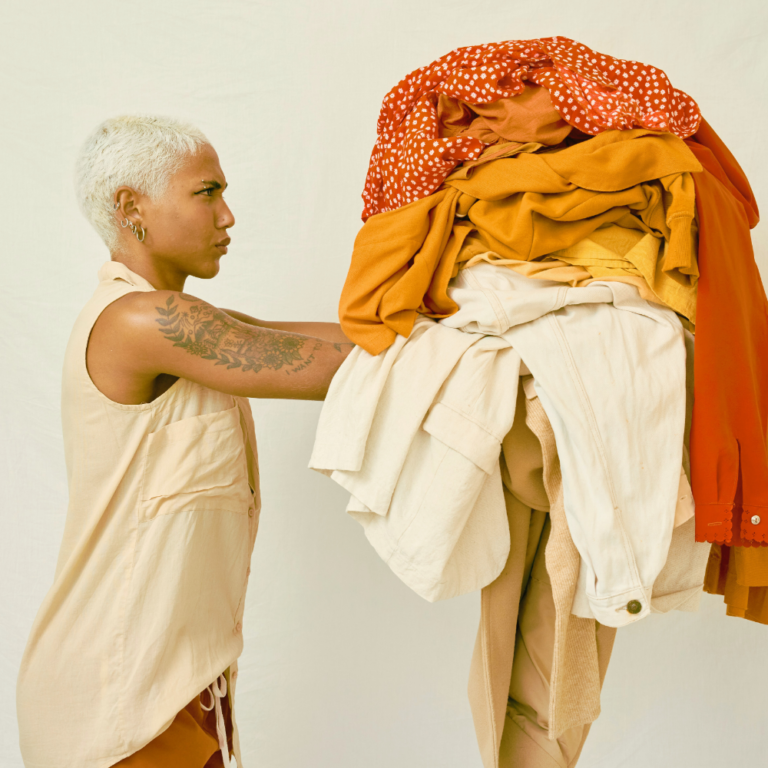
Most fashion brands aren’t as environmentally friendly as their marketing suggests.
I recently came across some eye-opening research from the UK’s Competition and Markets Authority, which analyzed over 4,000 products from 12 major online retailers. Get this: nearly 60% of the sustainability claims they looked at were either misleading or didn’t have proper evidence to back them up.1
That’s more than half of all the “eco-friendly” marketing we’re seeing out there.
You know those vague “sustainably made” tags you see everywhere? Or those recycling programs that sound amazing but leave you scratching your head about the actual details? Yeah, there’s a reason they feel too good to be true sometimes.
The fact is, as more of us start caring about the origins of our clothes, brands are feeling pressure to appear more sustainable, even if they are not. So, let’s dive into what greenwashing in fashion looks like and, more importantly, how we can get better at spotting it before we swipe our cards.
What Is Greenwashing and How Did It Take Over Fashion?
Greenwashing happens when companies exaggerate or mislead consumers about their environmental efforts, making products seem greener than they really are. In the fashion industry, this has escalated as demand for sustainable clothing grows. With shoppers looking for eco-conscious options, brands are quick to slap on labels like “conscious,” “green,” or “responsibly made” without real accountability.
Greenwashing Fashion Scandals
Several major brands have been called out for misleading sustainability claims. For example, H&M’s “Conscious Collection” was criticized for lacking transparency about what made it more sustainable than its regular lines. Similarly, ASOS faced scrutiny over its sustainability labels, which were found to be inconsistent and unclear. These cases highlight how brands use sustainability as a marketing tool rather than a real commitment to change.
Why Greenwashing Hurts More Than It Helps
Greenwashing isn’t just misleading, it actively slows down real environmental progress. When brands exaggerate their sustainability efforts, it creates confusion for consumers who want to shop responsibly. Worse still, it diverts attention away from genuinely sustainable brands and practices that could make a real difference. If companies aren’t held accountable, they have little incentive to improve their practices.
So, how can we navigate this mess? Awareness is the first step. Understanding how greenwashing works helps us make more informed choices and push brands to improve.
Real-World Examples: How Fashion Brands Greenwash
The devil is in the details, and these brands show exactly how greenwashing plays out in practice.
Shein’s “EvoluSHEIN” Collection
Shein launched its sustainability initiative, promoting “responsible fashion,” while still being one of the world’s largest fast fashion producers. They highlight their recycling programs and discuss reducing their carbon footprint, but here’s the thing – they’re still producing thousands of new styles weekly at rock-bottom prices. It’s challenging to reconcile “sustainable practices” with a business model that relies on disposable fashion and substantial water usage in production.
Zara’s “Join Life” Collection
Zara’s Join Lifeline promotes clothes made with “sustainable materials” and features green tags throughout their stores. Sounds great, right? But look closer, and you’ll see they’re often talking about using organic cotton for just one piece of a garment or highlighting recycled polyester while staying quiet about the rest of their production methods. They’re practicing selective promotion – showcasing the few sustainable elements while their overall environmental impact remains huge.
The Certification Game
Many brands love to boast about certifications like GOTS (Global Organic Textile Standard) or OEKO-TEX, but here’s what they don’t tell you. Sometimes, these certifications only apply to a tiny fraction of their products. A brand might have one organic cotton t-shirt with GOTS certification and then market its entire line as “certified sustainable.”
Missing the Fair Trade Mark
You’ll also notice how few fast fashion brands pursue fair trade certification for their supply chains. That’s because real sustainability isn’t just about the materials – it’s also about the people making our clothes. When brands focus solely on environmental buzzwords while ignoring labor practices, that’s another red flag.
The Circular Business Model Myth
Many brands now promote their “circular” approach, highlighting take-back programs that allow you to return old clothes for recycling. However, what they don’t mention is that most textile recycling is downcycling – turning your old jeans into insulation or cleaning rags rather than producing new clothes. Meanwhile, their second-hand clothing initiatives often represent a fraction of a percent of their total sales.
The pattern here? Brands highlight their smallest sustainable efforts while remaining silent about their most significant environmental impacts.
Top Greenwashing Red Flags
Sustainability is a hot trend in fashion, but not every “eco-friendly” claim holds up under scrutiny. Many brands rely on clever marketing rather than real change, making it harder for consumers to tell what’s truly sustainable and just a greenwashed sales pitch. Here are some of the biggest red flags to watch out for.
Vague and Meaningless Green Buzzwords
Words like “conscious,” “eco-friendly,” “green,” or “responsibly made” sound promising, but without specifics, they don’t mean much. A truly sustainable brand will back up these claims with clear details—what materials are used, how they’re sourced, and what impact they have. If a brand is throwing around feel-good terms without transparency, that’s a sign they might be more focused on looking sustainable than actually making a difference.
Misleading Certification Logos and Labels
Have you ever seen a clothing tag with a fancy green leaf logo or an official-looking badge? Some certifications, like GOTS (Global Organic Textile Standard) and OEKO-TEX, mean something. Others, however, are just self-created labels designed to give the illusion of credibility. Be wary of logos that don’t link to a recognized certification body or that a brand doesn’t explain clearly on its website. A good rule of thumb? If you can’t easily trace the certification’s standards and verification process, it’s probably not as official as it looks.
The Truth—But Only Part of It
Some brands technically tell the truth but leave out critical details. For example, a company might highlight that a shirt is made with “50% recycled cotton,” but what about the other 50%? Or they’ll advertise “organic” fabrics while relying on harmful dyes, unethical labor practices, or excessive plastic packaging. If a sustainability claim feels like it’s only telling part of the story, it’s worth looking deeper.
False or Exaggerated Recycling Claims
Recycling is one of the biggest greenwashing loopholes in fashion. Many brands encourage shoppers to drop off old clothes for “recycling,” but only a small fraction actually gets reused or repurposed. Most donated or “recycled” garments still end up in landfills or exported to developing countries, contributing to waste problems. Similarly, brands that promote clothing made from “recycled materials” may not mention that those fabrics still release microplastics when washed.
The True Cost of Fashion Greenwashing
Greenwashing isn’t just a marketing gimmick; it has real consequences for the planet, ethical businesses, and even our wallets. When brands exaggerate or mislead consumers about sustainability, they’re not just selling a product but slowing down real progress and making it harder for meaningful change to take hold. Here’s what’s at stake.
The Environmental Fallout
When brands claim to be sustainable without changing their practices, the planet pays the price. False sustainability claims can mask the continued use of fossil-fuel-based fabrics, overproduction, and wasteful manufacturing. Worse, they create a false sense of progress, making it seem like fashion is “going green” when the industry is still one of the biggest polluters. If companies focused on real solutions instead of just marketing tactics, we’d see far greater reductions in emissions, waste, and water pollution.
Unfair Competition for Truly Sustainable Brands
Small and genuinely sustainable brands are already working against the odds ethical sourcing, fair wages, and responsible production often come with higher costs. When big brands greenwash, they undercut these efforts by offering fast fashion at “sustainable” prices, making it harder for consumers to see the value in truly eco-friendly products. This puts authentic, sustainable brands at an economic disadvantage while fast fashion giants profit from misleading claims.
The Cost to Consumers
Greenwashing doesn’t just hurt the planet it can also drain our wallets. Many people are willing to pay more for sustainable clothing, but when a brand misrepresents its practices, consumers spend extra on what they think is an eco-friendly choice. And since greenwashing makes it harder to differentiate between real and fake sustainability, it creates skepticism, making consumers less likely to invest in ethical brands in the future.
Legal Consequences and Accountability
Regulators are starting to crack down on greenwashing, and some brands are facing legal action for misleading claims. In recent years, companies like H&M and ASOS have been investigated for vague sustainability marketing, and lawsuits are increasing as consumers demand transparency. Governments and watchdog organizations are pushing for stricter regulations, but for now, it’s mainly up to consumers to call out deceptive practices and hold brands accountable.
How to Identify Genuine Sustainable Fashion
With so many brands claiming to be “sustainable,” it’s easy to feel lost in a sea of greenwashing. But real sustainability isn’t just about marketing, it’s about measurable actions, transparency, and accountability. So, how can you tell if a brand is truly committed to ethical and eco-friendly fashion? Here’s what to look for.
Signs of a Truly Sustainable Fashion Brand
Genuine sustainable brands go beyond catchy slogans and integrate sustainability into their business model. Some key indicators include:
- Ethical Sourcing – The brand provides clear information about where and how its materials are sourced.
- Slow Fashion Practices – Instead of constantly churning out new collections, they focus on quality, durability, and timeless designs.
- Fair Wages and Working Conditions – They disclose factory locations and ensure ethical labor practices rather than hiding behind vague “made responsibly” statements.
- Thoughtful Packaging – Truly eco-conscious brands minimize plastic and opt for compostable or recyclable materials.
Certifications That Actually Mean Something
Some sustainability labels are merely greenwashing in disguise, but others carry genuine weight behind them. When in doubt, look for third-party certifications that require strict environmental and ethical standards. Some of the most reliable include:
- GOTS (Global Organic Textile Standard) – Ensures organic fibers and responsible manufacturing.
- OEKO-TEX Standard 100 – Verifies that textiles are free from harmful chemicals.
- Fair Trade Certified – Guarantees ethical wages and working conditions.
- Bluesign® – Focuses on reducing textile industry pollution and waste.
- If a brand boasts its own made-up “eco” badge without clear criteria, that’s a red flag.
Related Article: Beyond Greenwashing: The Third-Party Certifications That Prove Brand Claims
Supply Chain Transparency: Is the Brand Actually Open About Its Practices?
Sustainable brands should be upfront about their production process, from sourcing materials to factory conditions. If you have to dig through pages of vague marketing to find basic details—or worse, if those details don’t exist that’s a sign the brand might not be as ethical as it claims. Look for brands that disclose:
- Where do their fabrics come from?
- How their workers are treated?
- What are they doing to reduce waste and emissions?
Real vs. Fake Sustainability Initiatives
Some brands love highlighting one eco-friendly initiative while ignoring the rest of their harmful practices. A few common greenwashing tactics include:
- “Sustainable” Capsules – A tiny eco-friendly collection while the rest of the brand follows business as usual.
- Take-Back Recycling Programs—This sounds great, but if there’s no transparency about what actually happens to those clothes, it’s just another marketing ploy.
- Carbon Offsetting Claims – Planting a few trees doesn’t erase the environmental impact of mass-producing synthetic clothing.
Final Check: Do Their Actions Match Their Words?

A truly sustainable brand will not just talk the talk it will back it up with real action, clear data, and ongoing improvements. If a company is truly committed to sustainability, it will be evident in how it operates, not just in its advertising. The more transparency, accountability, and long-term commitment a brand shows, the more you can trust that its sustainability claims are real.
A great example of a truly sustainable fashion brand is Patagonia. Unlike many brands that slap “eco-friendly” on a tag without much substance, Patagonia has built sustainability into its business model for decades.
Here’s why Patagonia stands out:
- Transparency: They openly share details about their supply chain, labor practices, and environmental impact—both the good and the areas they’re working to improve.
- Materials: They prioritize organic, recycled, and regenerative materials, phasing out fabrics with high environmental costs.
- Repair & Reuse Programs: Their Worn Wear program encourages customers to repair and resell used Patagonia gear instead of buying new, reducing waste.
- Activism & Accountability: Patagonia has restructured its ownership to ensure that protecting the planet remains its core mission. The Chouinard family transferred ownership to two new entities: the Patagonia Purpose Trust, which holds all voting shares to safeguard the company’s values, and the Holdfast Collective, a nonprofit that owns the remaining stock and receives all company dividends to support environmental causes. Instead of benefiting private shareholders, Patagonia’s estimated annual profits of $100 million will be directly invested in protecting nature and biodiversity. The company remains a B Corp and continues its commitment to donating 1% of sales to grassroots environmental initiatives, reinforcing its role as a leader in purpose-driven business.2
While no brand is perfect, Patagonia consistently backs up its sustainability claims with real action, clear goals, and ongoing improvements, exactly what a truly sustainable brand should be doing.
Consumer Action Against Fashion Greenwashing
As consumers, we are vital in pushing the fashion industry toward sustainability. While brands must step up their game, we can hold them accountable and make smarter, more informed choices. Here’s how you can take action against greenwashing and support brands genuinely making a difference.
Tools for Verifying Brand Sustainability Claims

Before you buy into a brand’s “eco-friendly” marketing, take the time to do a little research. Some great tools to help verify sustainability claims include:
- Good On You: An app and website that rates brands based on their environmental and ethical practices.
- Fashion Revolution’s Transparency Index: A guide to how transparent brands are about their supply chains.
- Greenwashing Index: A platform where consumers can submit greenwashed claims for evaluation.
These resources can help you reduce the noise and see if a brand’s claims hold up.
Steps to Report Misleading Environmental Marketing
If you encounter a brand making dubious sustainability claims, don’t ignore it—report it! Watchdog organizations, like The Competition and Markets Authority (CMA), have channels where consumers can flag misleading or deceptive advertising. You can also use tools like the Advertising Standards Authority (ASA) to lodge complaints. Holding brands accountable is one of the best ways to drive meaningful change.
The Truth in Advertising (TINA) nonprofit empowers consumers to spot and report deceptive advertising. They offer resources, tools, and guidance to help people understand their rights and take action against misleading marketing claims.
Supporting Authentic Sustainable Fashion Initiatives
The best way to fight greenwashing is by supporting brands that truly walk the talk. Look for transparent companies that use ethical materials and are committed to sustainability in all aspects of their business. By supporting smaller, independent, or established sustainable brands, shopping with intention helps shift the market toward more responsible practices. Consider investing in long-lasting pieces, buying secondhand, or exploring clothing rental services. Every choice counts.
This Has Been About Greenwashing Fashion
Take action, make a difference! Greenwashing in fashion might seem like a huge hurdle, but now that you’re armed with the facts, you have the power to make smarter, more informed choices. True sustainability isn’t just about flashy labels or trendy buzzwords; it’s about brands that are transparent, accountable, and committed to real change.
Next time you’re shopping, choose to support brands that live up to their promises and hold the greenwashed ones accountable. By embracing mindful consumption and the slow fashion movement, we can push the industry toward genuine sustainability one thoughtful purchase at a time.
This is where the slow fashion movement comes into play. By embracing slow fashion, you’re not just avoiding greenwashing you’re supporting a shift toward quality over quantity, sustainability over fast trends, and timeless pieces that last. Together, we can create a fashion industry that puts the planet first one mindful purchase at a time!
View Article Sources
- Changing Markets Foundation. (2021). Licence to greenwash: Full report. Retrieved from https://circulareconomy.europa.eu/platform/sites/default/files/licence-to-greenwash-full-report.pdf
- Changing Markets Foundation. (2021). Licence to greenwash: Full report. Retrieved from https://circulareconomy.europa.eu/platform/sites/default/files/licence-to-greenwash-full-report.pdf ↩︎
- Patagonia Works. (2022, September 14). Patagonia’s next chapter: Earth is now our only shareholder. Retrieved from https://www.patagoniaworks.com/press/2022/9/14/patagonias-next-chapter-earth-is-now-our-only-shareholder ↩︎






